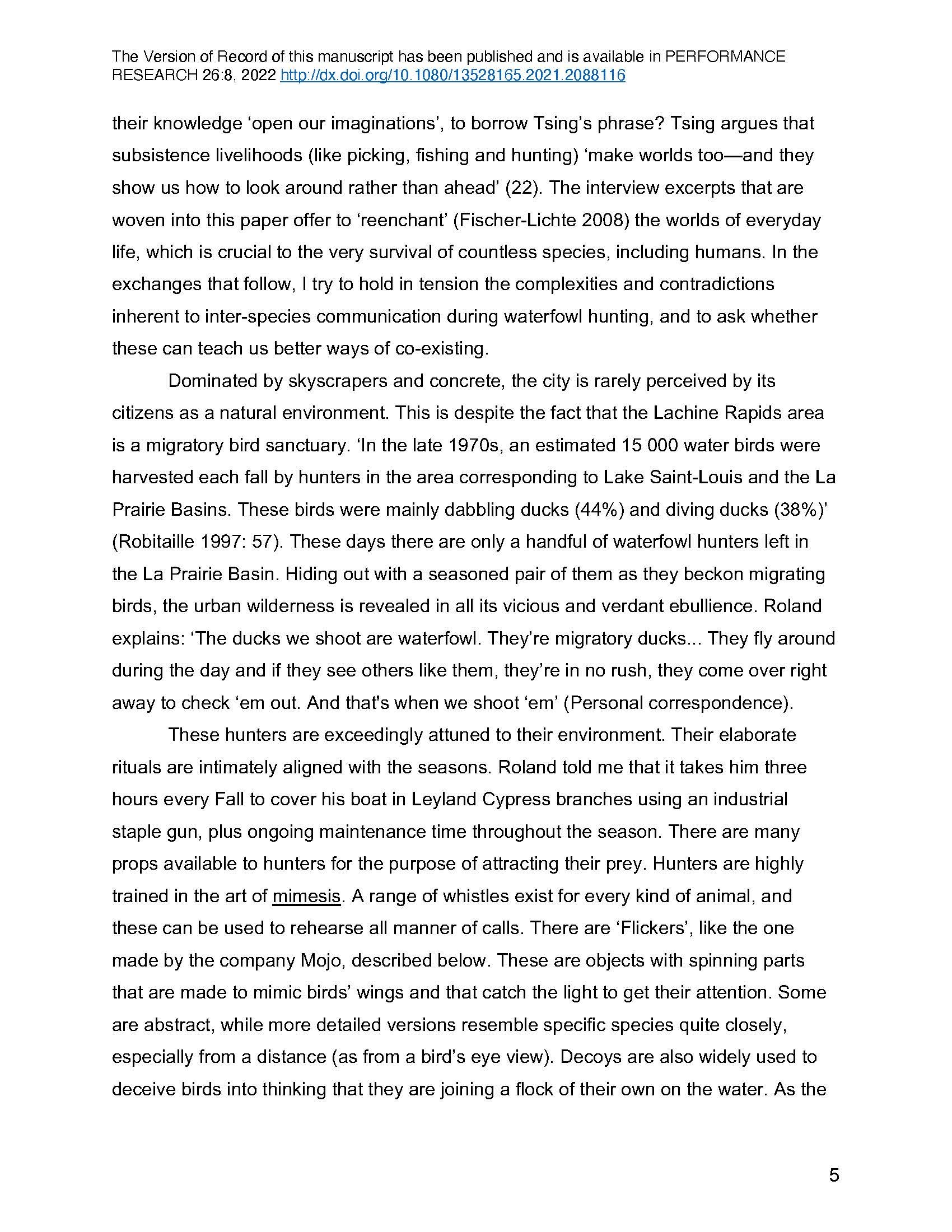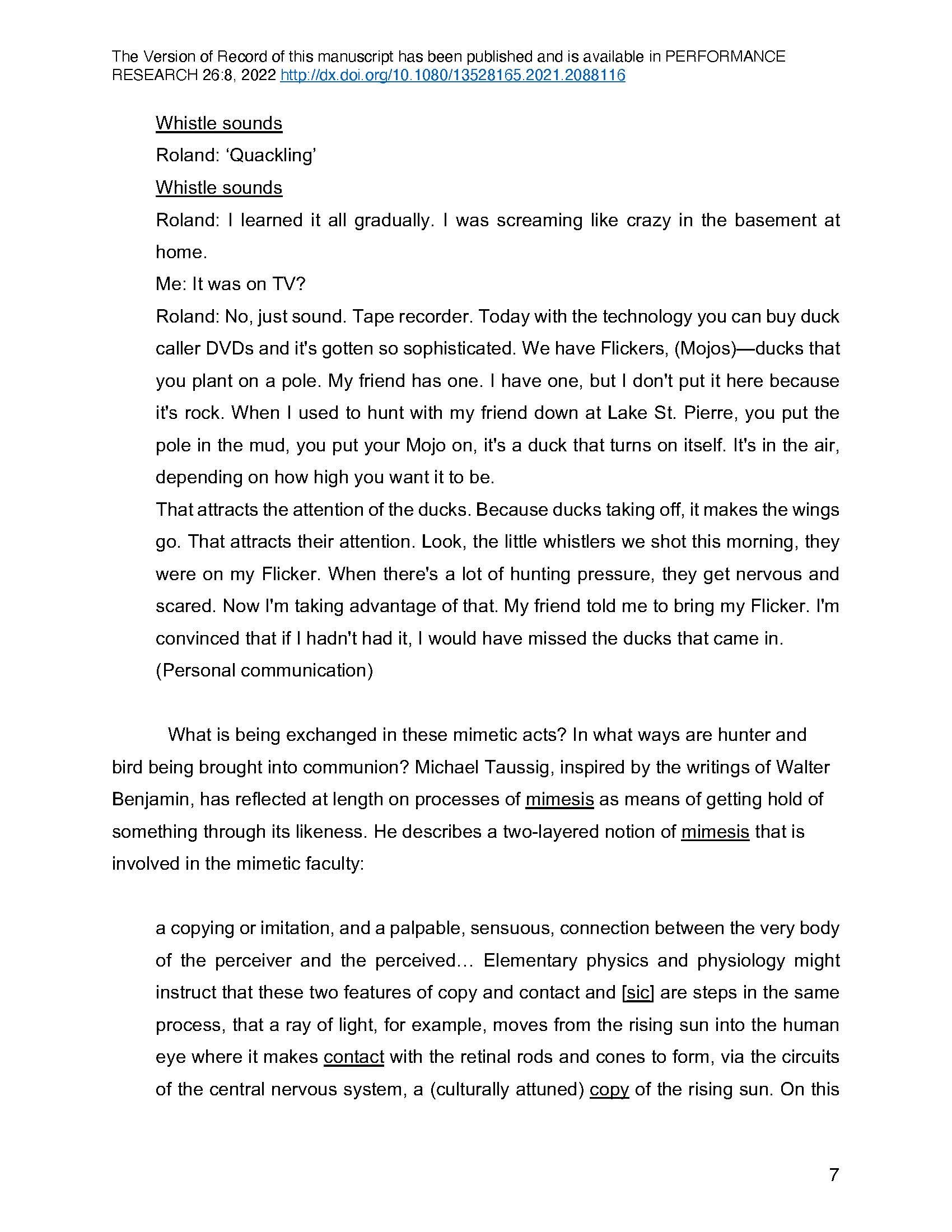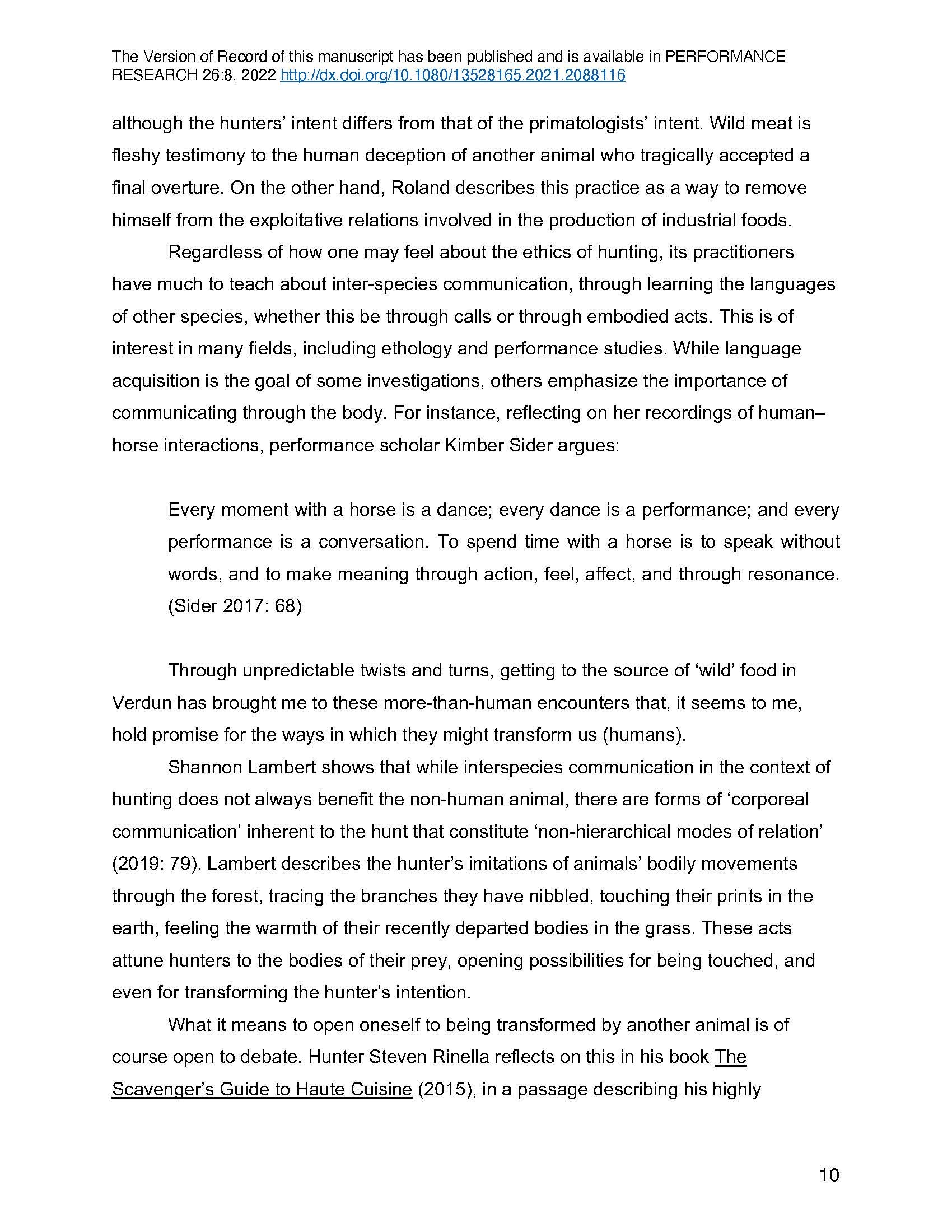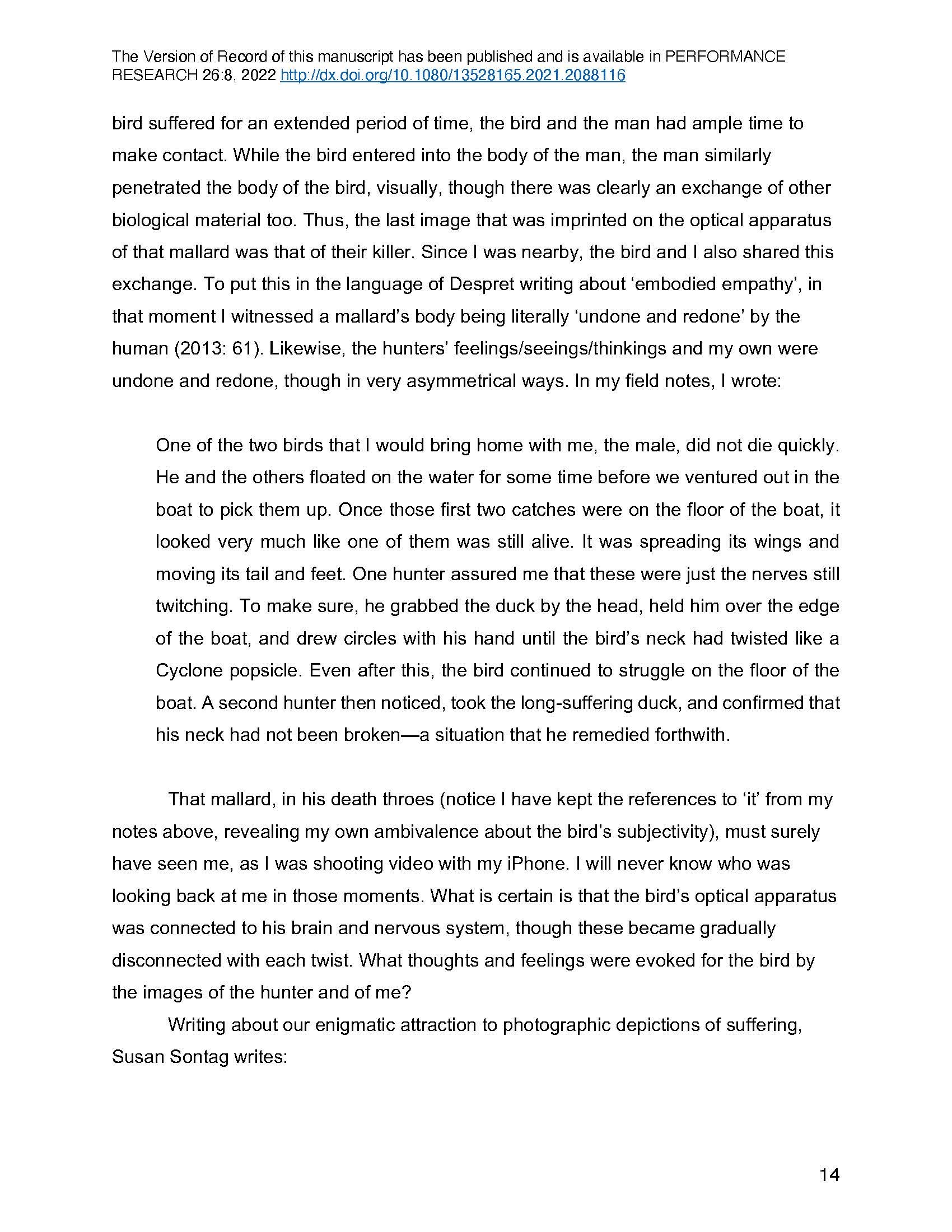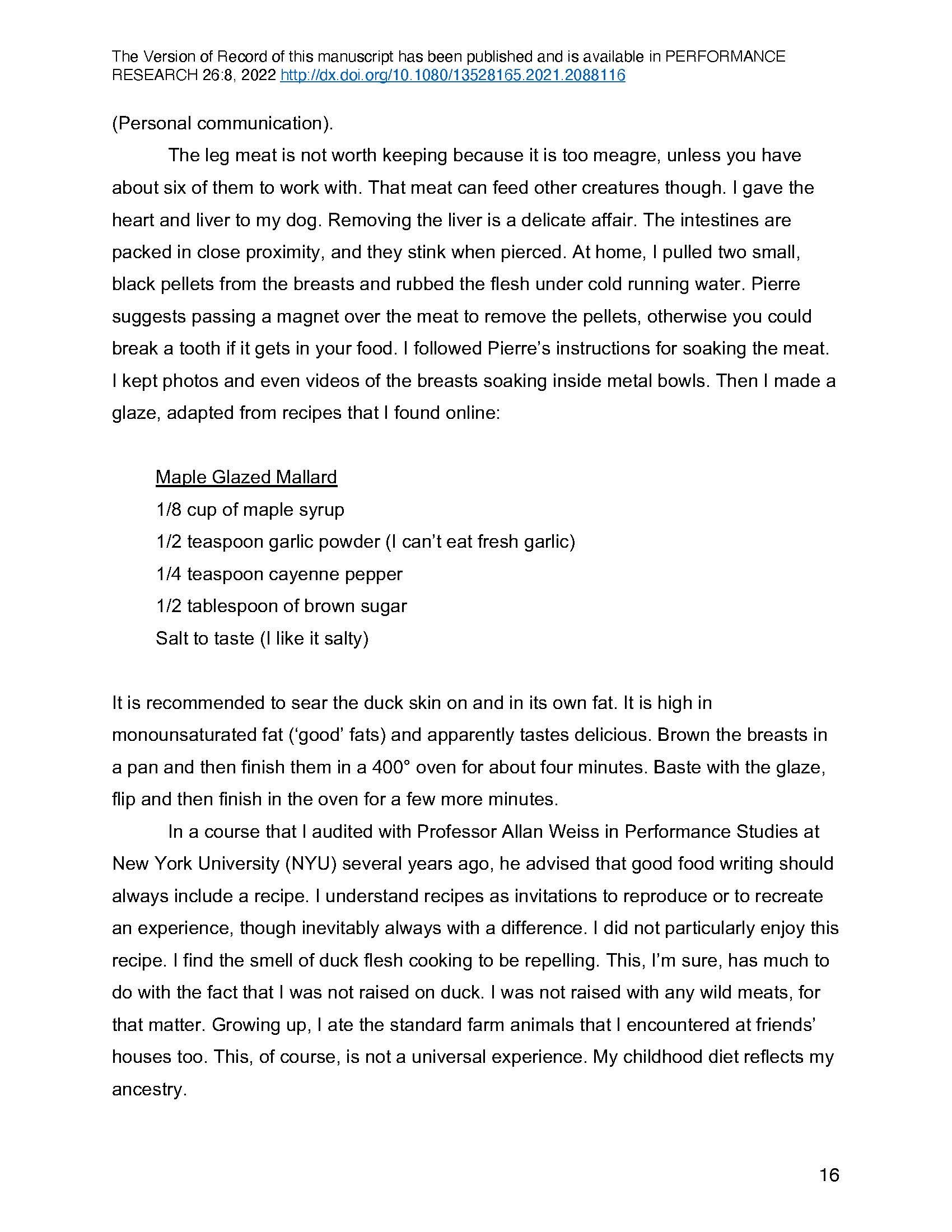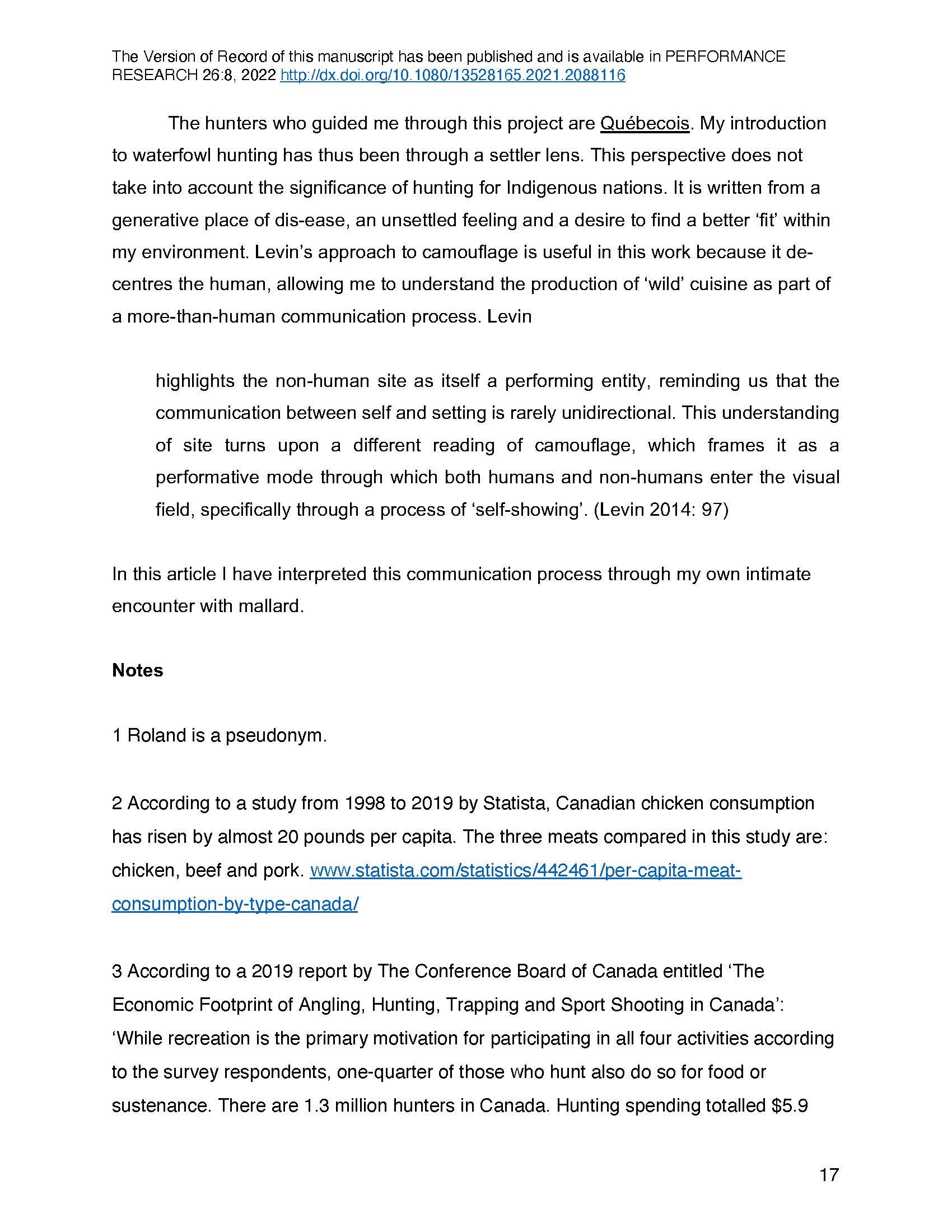
Fowl Play: Overtures in human–bird communication
Abstract
This article focuses on the affective and performative capacities involved in waterfowl hunting. I analyze my own performance as a researcher, disguised as a hunter, shooting videos and photos, capturing audio, and consuming wild birds. Camouflaged in cypress boughs, nestled into phragmites and surrounded by Canada goose and mallard decoys, I study the art of mimesis enacted by my hunter guides.
Food studies are limited if approached only through dishes (products) and their representation (images, words). Performance theory provides helpful ways of understanding what is missing if we try to apprehend cuisine strictly through documents, records, and material remains. In this piece, I revisit my video and photo documentation from a morning spent on the St Lawrence River in Montreal with two lifelong hunters. These archives breathe new life into my reflections of that day. Through sensory ethnography I peel back layers of deception and disguise that ultimately obscure the complex inter-species relations at play in the production of wild cuisine.
The Version of Record of this manuscript has been published and is available in PERFORMANCE RESEARCH 26:8, 2022 http://dx.doi.org/10.1080/13528165.2021.2088116




